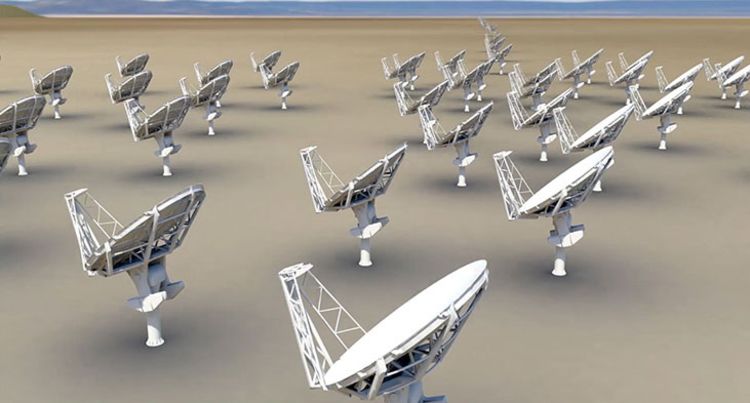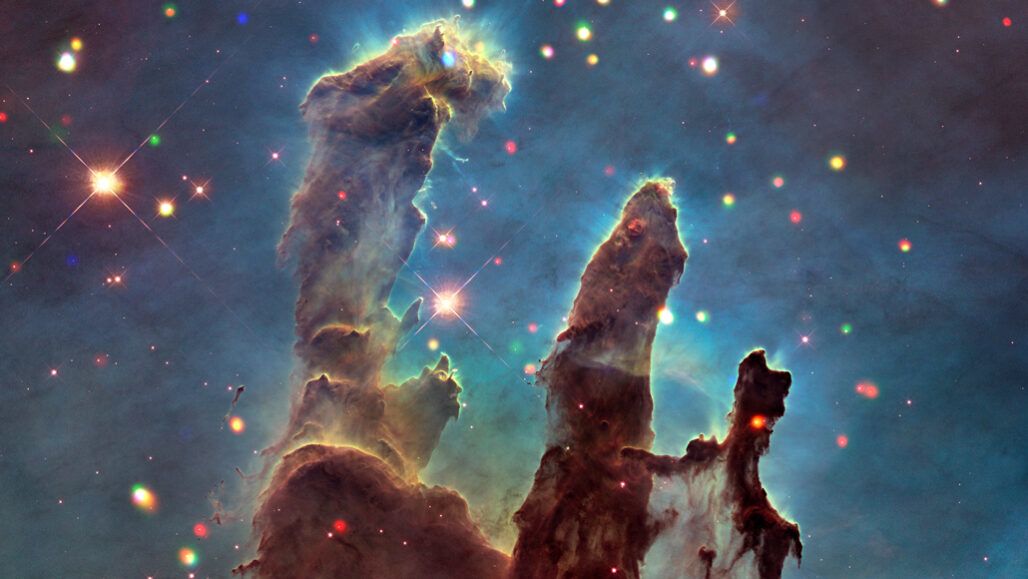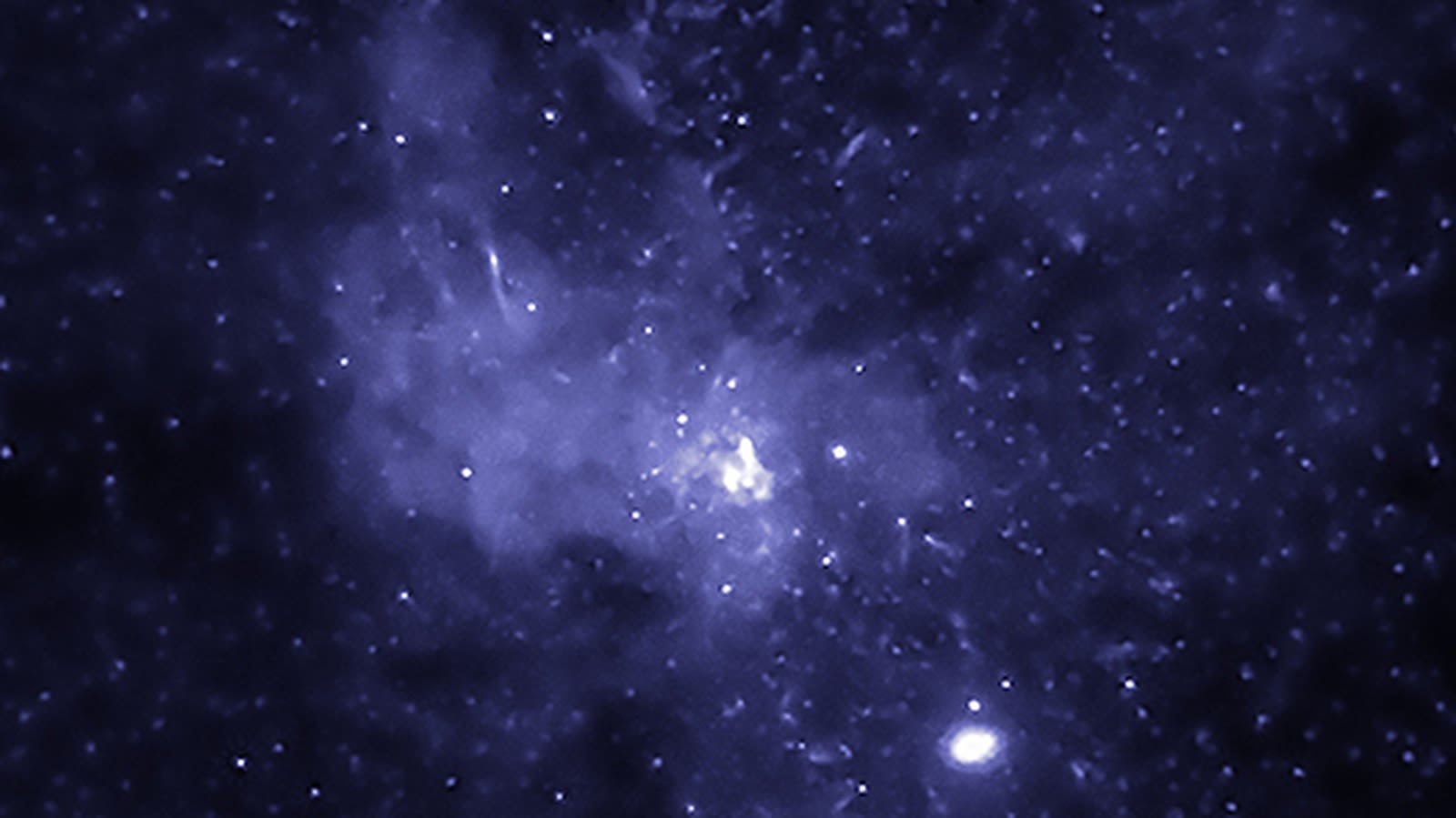NVGLA: Next Generation Very Large Array
NUI Galway Researcher to tune telescope for extra-terrestrial searches

Dr Evan Keane of NUI Galway's Centre for Astronomy has been awarded seed funding to examine how the next generation Very Large Array radio telescope can be designed to identify signatures of extra-terrestrial intelligence.
Radio telescopes are particularly well suited for identifying technosignatures, technological signatures of life, from exoplanets. Radio waves, which can be transmitted across, and be detectable over, greater distances than other forms of light, can encode large bandwidths of information
Currently in the design stages, the next generation Very Large Array will be the largest radio telescope in the Northern Hemisphere, consisting of hundreds of radio dishes, spread over 8,000 kilometres in North America working in tandem together. Dr Keane and his collaborators in Canada and the United States will examine how the next generation Very Large Array should be designed to maximise its abilities in the search for technosignatures of extraterrestrial intelligence. How should the dishes be spaced, what frequency bands should be used, what search algorithms should be deployed and what supercomputing backend capabilities do these require? And how to do this while simultaneously performing all the other cutting edge astrophysics studies that the observatory will do?
Dr Keane said: “With my collaborators in Berkeley, and across Ireland, we have been enabling a technosignature search system on the Irish Low Frequency Array station in Birr, Co. Offaly. This is a great opportunity for upcoming Irish scientists to tackle these questions at home.”
Prior to joining NUI Galway in January, Dr Keane was Project Scientist for the Square Kilometre Array, the two largest telescopes in the Southern Hemisphere, where he worked the technical design ensuring that the telescopes deliver on the observatory's scientific priorities. Since his arrival Dr Keane has also brought a joint NUI Galway-Berkeley summer internship programme which will hire two research interns to work with the telescope in Birr this summer.
The funding for this work comes from an ngVLA Community Study, a programme run by the United States’ National Radio Astronomy Observatory.



Next Generation Very Large Array (ngVLA)
KEY SCIENCE GOALS (KSGs)
KSG1: Unveiling the Formation of Solar System Analogs on Terrestrial Scales
The ngVLA will measure the planet initial mass function down to a mass of 5–10 Earth masses and unveil the formation of planetary systems similar to our own Solar System by probing the presence of planets on orbital radii as small as 0.5 AU at the distance of 140 pc. The ngVLA will also reveal circumplanetary disks and sub-structures in the distribution of mm-size dust particles created by close-in planets and will measure the orbital motion of these features on monthly timescales.
KSG2: Probing the Initial Conditions for Planetary Systems and Life with Astrochemistry
The ngVLA will be able to detect predicted, as yet unobserved, complex prebiotic species that are the basis of our understanding of chemical evolution toward amino acids and other biogenic molecules. It will also allow us to detect and study chiral molecules, to include testing ideas on the origins of homochirality in biological systems. The detection of such complex organic molecules will provide initial chemical conditions data of forming solar systems and individual planets.
KSG3: Charting the Assembly, Structure, and Evolution of Galaxies from the First Billion Years to the Present
The ngVLA will provide an order-of-magnitude improvement in depth and area for surveys of cold gas in galaxies back to early cosmic epochs, and it will enable routine sub-kiloparsec scale resolution imaging of the gas reservoirs. The ngVLA will provide a unique view into how galaxies accrete and expel gas and how this gas is transformed inside galaxies. It does so by imaging their extended atomic reservoirs and circum-galactic regions, and by surveying the physical and chemical properties of molecular gas over the entire local galaxy population. These studies will reveal the detailed physical conditions for galaxy assembly and evolution throughout the history of the universe.
KSG4: Using Pulsars in the Galactic Center to Make a Fundamental Test of Gravity
Pulsars in the Galactic Center represent clocks moving in the space-time potential of a supermassive black hole. Imaging these via ngVLA would enable qualitatively new tests of theories of gravity. More generally, this would offer the opportunity to constrain the history of star formation, stellar dynamics, stellar evolution, and the magneto-ionic medium in the Galactic Center. The ngVLA combination of sensitivity and frequency range will enable it to probe much deeper into the likely Galactic Center pulsar population to address fundamental questions in relativity and stellar evolution.
KSG5: Understanding the Formation and Evolution of Stellar and Supermassive Black Holes in the Era of Multi-Messenger Astronomy
The ngVLA will be the ultimate black hole hunting machine, surveying everything from the remnants of massive stars to the supermassive black holes that lurk in the centers of galaxies. High-resolution imaging abilities will separate low-luminosity black holes in our local Universe from background sources, thereby providing critical constraints on their formation and growth for all sizes and mergers of black hole–black hole binaries. The ngVLA will also identify the radio counterparts to transient sources discovered by gravitational wave, neutrino, and optical observatories. Its high-resolution, fast-mapping capabilities will make it the preferred instrument to pinpoint transients associated with violent phenomena such as supermassive black hole mergers and blast waves.
